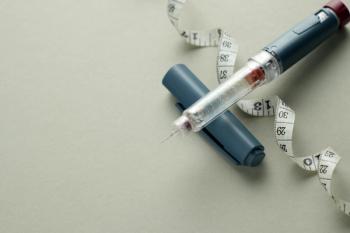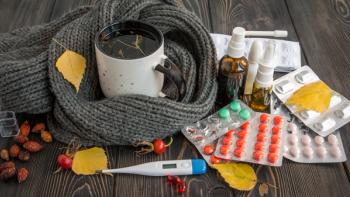
Women With Stage 5 CKD Less Likely to Survive, Receive Kidney Replacement Therapy Than Men
Key Takeaways
- Women with stage 5 CKD face higher mortality and lower KRT access compared to men, especially at younger ages.
- The study highlights potential treatment disparities and inequities in KRT access for female patients with CKD.
Particularly, younger women with chronic kidney disease (CKD) experienced the greatest survival disadvantage.
Female survival advantage was generally absent or reversed after developing stage 5 chronic kidney disease (CKD), wrote authors of research published in JAMA Internal Medicine. The authors' findings suggest that differences in treatment decision-making or inequities in access to kidney replacement therapy (KRT) may lead to poorer outcomes in female patients, particularly those at younger ages.1
Women Are More Likely to Develop CKD
According to the National Kidney Foundation, millions of individuals around the world live with CKD, with some research suggesting that the risk of disease onset is slightly greater in women (14%) than in men (12%). Additionally, it is known that women who are of childbearing age face different problems than men regarding kidney disease.
Women with CKD are often discouraged from using a birth control pill due to a greater chance for an increase in blood pressure and blood clots that can make kidney disease worse, reported the National Kidney Foundation. Women with CKD may also have more problems with pregnancy, causing increased risks to the mother and the child.
Even women without CKD may be at risk during both pregnancy and birth because of preeclampsia and other complications that can increase blood pressure and put a strain on the kidneys.2
Further, urinary tract infections (UTIs) lead to nearly 10 million health care visits each year. If not treated early and properly, the infection can travel to the kidneys and cause pyelonephritis, a more serious type of infection. UTIs and kidney infections are more common in women than in men.2
Examining Mortality Sex Differences in Treatment of Adults With CKD
Because women are more likely to develop CKD than men, the investigators sought to examine sex differences in mortality and treatment with KRT among adults with incident stage 5 CKD. Their population-based cohort study utilized administrative and kidney care program data from Alberta, Canada. Adult patients 18 years and older with incident non–KRT-dependent stage 5 CKD were identified between April 2005 and March 2019 and were observed from study entry until death, out-migration, or March 2021. These data were analyzed from January to August 2025.1
Among the 7506 enrolled cohort members, approximately 45.1% (n = 3385) were female (median [IQR] age: 74 [61–83] years), and the remaining 54.9% (n = 4121) were male (median [IQR] age: 70 [58–80] years). The median (IQR) follow-up was about 7.9 (4.7–11.5) years.1
Results
Compared with the general population, female patients with CKD experienced greater excess, particularly those of a younger age, such as those younger than 55 years (standardized mortality ratio: 40.9 [95% CI 34.6≠47.3]). For men in this age group, the standardized mortality ratio was about 15.9 (95% CI 13.5–18.2).
The difference narrowed with increasing age: in ages 65 to 74 years, standardized mortality ratios were 14.1 (95% CI, 12.8-15.4) for female individuals (170.0 observed deaths vs 12.1 expected deaths per 1000 person-years) and 8.5 (95% CI, 7.9-9.2) for male individuals (156.0 observed deaths vs 18.3 expected deaths per 1000 person-years).
By age 85 years and older, values were similar (4.2 [95% CI, 3.9-4.5] for female individuals [490.2 observed deaths vs 117.3 expected deaths per 1000 person-years] vs 4.1 [95% CI, 3.7-4.4] for male individuals [510.3 observed deaths vs 125.5 expected deaths per 1000 person-years]).1
Within the stage 5 CKD cohort, female patients had higher crude risks of all-cause mortality (58.9% [95% CI 57.2–60.7]) and death without receiving KRT (39.9% [95% CI 38.3–41.6]) compared with men (all-cause mortality: 51.9% [95% CI 50.3–53.5]; death without KRT: 28.3% [95% CI 26.9–29.7]) and lower probabilities of receiving dialysis (23.3% [95% CI 21.8–24.8] vs 27.8% [95% CI 26.3–29.3]) and transplant (8.5% [95% CI 7.5–9.5] vs 14.5% [95% CI 13.4–15.7]) than males.1
Additionally, 5-year all-cause mortality risks were higher in younger female individuals than male individuals (younger than 55 years: 20.7% vs 14.6%), but were similar between sexes at older ages. Irrespective of comorbidity, female individuals younger than 65 years were substantially less likely to receive a kidney transplant. Female patients 65 years and older were less likely to receive dialysis or a transplant.1
Study Limitations and Future Research on Women With CKD
“This study has limitations. First, the findings may not generalize to populations without universal KRT access or with greater ethnic diversity. Many socioeconomic and clinical factors, such as living status, causes of CKD, medication adherence, blood pressure or diabetes control, and smoking status, were not captured in our administrative health databases and may have influenced outcomes and treatment decisions. Nevertheless, our methodological framework is applicable to other populations,” the study authors wrote.
“Second, outcome probability analyses stratified by sex, age, and comorbidity had relatively small sample sizes, limiting statistical power. Despite stratification for multiple variables, residual confounding is possible. Finally, the lack of data on treatment preferences and conservative CKD management limits conclusions about the mechanisms underlying these findings.”1
The investigators emphasized that their findings highlight a need for additional research that further assesses the biological, structural, and societal factors that influence sex differences in treatment decision-making and survival, particularly in the CKD space.1
REFERENCES
1. Chan C, Sawhney S, Ahmed SB, et al. Sex Differences in Mortality and Receipt of Kidney Replacement Therapy Among Adults With Stage 5 Chronic Kidney Disease. JAMA Intern Med. Published online November 17, 2025. doi:10.1001/jamainternmed.2025.5979
2. National Kidney Foundation. Women and kidney disease. December 14, 2017. Accessed November 20, 2025. https://www.kidney.org/news-stories/women-and-kidney-disease
Newsletter
Stay informed on drug updates, treatment guidelines, and pharmacy practice trends—subscribe to Pharmacy Times for weekly clinical insights.












































































































































































































